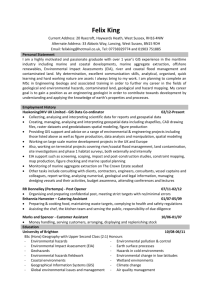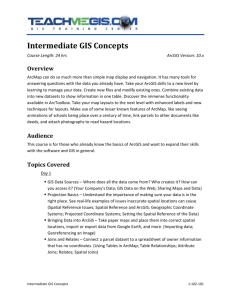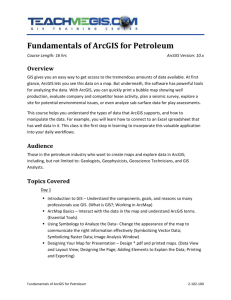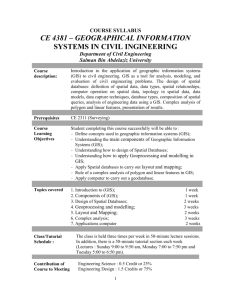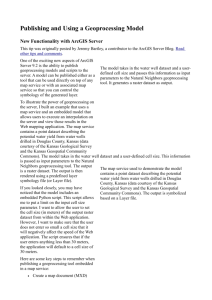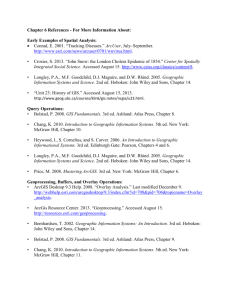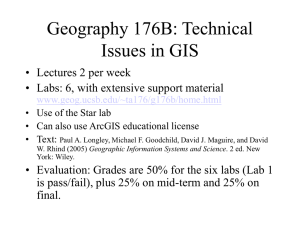2-Understanding Servers (PPT) - the GIS TReC at ISU
advertisement
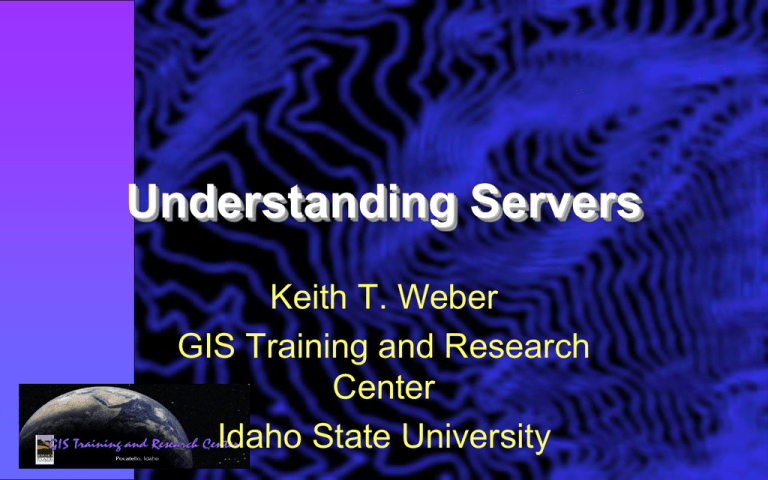
Understanding Servers Keith T. Weber GIS Training and Research Center Idaho State University What is a server? • Desktop • Workstation • Server Functional Roles • • • • • • Data Storage Application Host GeoProcessing Server Spatial Data Management Website Host E-mail Data Storage • NAS • SAN • [other] Data Storage: Fault Tolerance • • • • • RAID=Redundant Array of Inexpensive Disks Hardware or software implementation Level 0,1,5,10 Minimum four disks on server Hard disk types – SCSI, IDE, etc. – Hot-swappable Data Storage: The Way Fault Tolerance Works! 6 15 Data Storage: RAID and RAIS • Redundant Array of Inexpensive Disks • Redundant Array of Inexpensive Servers Hints and Tips: The 5-nines • 99.999% of the time… • Servers are operational and functioning • How much down-time does this allow? – 5 minutes! – No longer even a goal! – Why? Application Host • GIS software-host server (application server) • GIS software license server GeoProcessing Server • ArcGIS for Server software resides on server with GeoProcessing Services running • Clients have the desktop or workstation application installed • Large tasks are processed by the server – Can fully utilize available processors and RAM Spatial Data Management • SDE=Spatial Database Engine • Requires DBMS • ArcSDE • Spatial library organized with a RDBMS Web Server • IIS – Overview of structure on host server – Client access (http://giscenter.isu.edu) • ArcGIS for Server – Serving maps ArcGIS for Server Includes Web Services as the next generation web map server Provides GeoProcessing capabilities even through the Web! Compliments SDE by serving GeoData services Types of Server Hardware • Glorified desktops • Standard Rack-based • Blade – Rack based, but not limited to 42 Units – Can contain more than CPUs • • • • Professional Tips Data folder for clients Data liability policy Use of Temp folders System Administration: – Do not allow write access from remote clients anywhere on your system! • Security – Web access is principal security threat – FTP is a primary avenue for intrusion – Dynamic IP addressing Applying Security to Your Server • Reactive: – TCP/IP exclusion • Proactive – Service packs – Updating anti-virus dictionaries – Disabling and uninstalling FTP – Firewalls Security (cont’d) • Backup your data – Mission critical – Critical – Non-critical data Key Concepts • A server is best defined by its Functional Role. • You should now know several roles for GIS servers. • Fault tolerance addresses data integrity. • Proactive security measure address data security. Questions…Assignment Get ready for the 2-minute write


